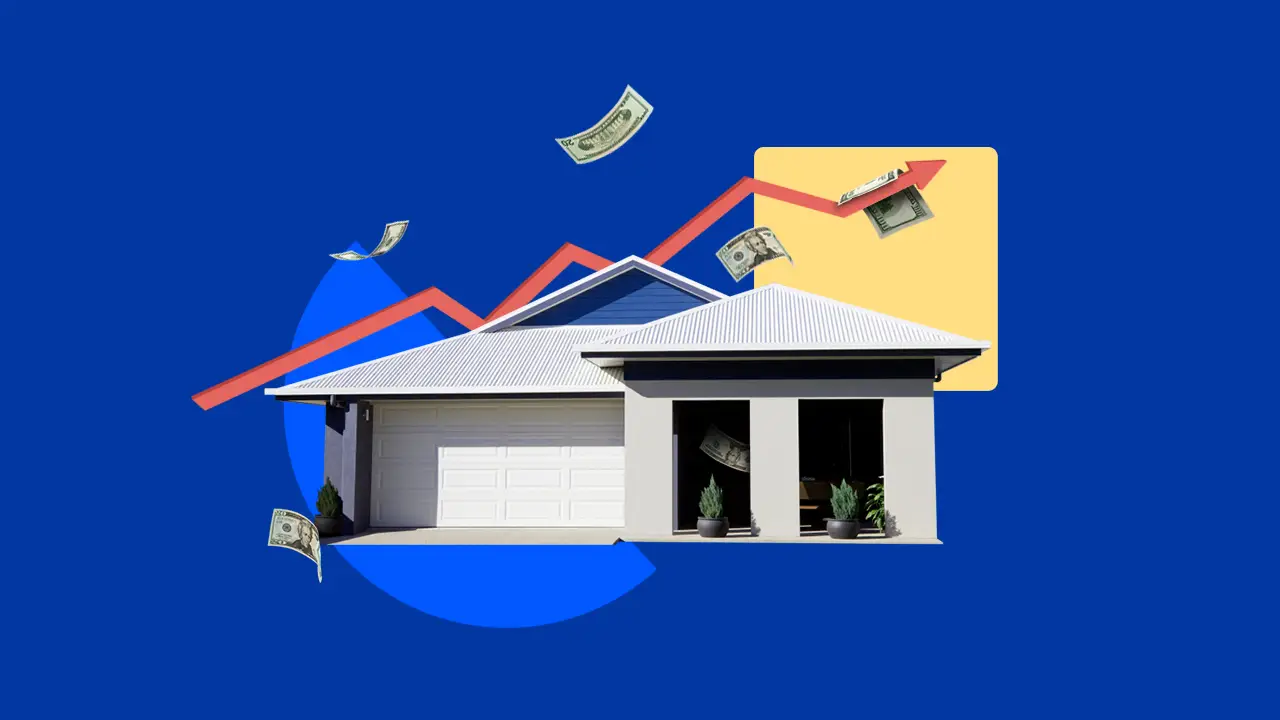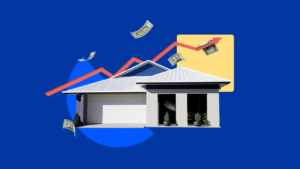Spring 2025 Housing Market: Record Costs and Buyer Hesitation Signal Challenging Season
Housing Affordability Crisis Dampens Seasonal Buying Activity
The traditionally vibrant spring homebuying season has hit significant headwinds in 2025, with the national median monthly housing payment soaring to an unprecedented $2,868 during the four-week period ending May 4. This financial hurdle, combined with widespread economic uncertainty, has created a challenging environment for both buyers and sellers navigating today's real estate landscape.
The record-high housing costs stem from a dual pressure point: home sale prices have increased 1.8% year-over-year while mortgage rates hover at 6.76%. Though slightly down from mid-April's peak, current rates remain substantially higher than the pandemic-era lows that fueled previous buying frenzies.
"The market is experiencing a significant imbalance between buyer willingness and financial capability," explains housing economist Dr. Sarah Mitchell. "Despite genuine interest from prospective homeowners, the financial barriers to entry have never been higher in nominal terms."
The impact of these conditions is evident in recent market metrics. Mortgage purchase applications, while showing a weekly uptick, have decreased 6% month-over-month. More tellingly, pending home sales have fallen 3.9% compared to last year—the most significant decline observed in three months. Market analysts note that seasonal factors are also at play, with Easter falling within this year's measurement period but not last year's comparable timeframe.
Regional Disparities Reveal Market Complexity
A closer examination of metropolitan data exposes dramatic regional variations in market performance, highlighting how local economic conditions are creating distinct real estate microclimates across the country.
Northeast markets are demonstrating remarkable resilience, with Newark, NJ leading nationwide with a striking 13.5% year-over-year increase in median sale prices. Other strong performers include Pittsburgh (8.8%), Detroit (8.7%), Philadelphia (8.7%), and Nassau County, NY (8.0%).
In stark contrast, Western markets are experiencing price corrections. Oakland, CA has seen the most significant decline at -6.7%, followed by Phoenix (-3.5%), Jacksonville, FL (-2.7%), Austin, TX (-2.1%), and Tampa, FL (-1.6%).
Pending sales data reveals similar geographic disparities. Midwestern cities are outperforming national trends, with Indianapolis (6.4%), Detroit (5.7%), Warren, MI (4.9%), and Columbus, OH (4.4%) all posting positive year-over-year growth. Meanwhile, Florida markets are experiencing pronounced contractions, with Miami (-22.6%) and Fort Lauderdale (-20.3%) showing the steepest declines.
"We're witnessing a fragmentation of the national housing market," notes urban planning professor Dr. James Wilson. "Areas with more moderate historical price growth and stronger local economies are maintaining momentum, while previously overheated markets face necessary corrections."
Supply-Demand Dynamics Shift as Inventory Builds
The sluggish sales pace has contributed to a notable increase in available housing inventory, creating subtle but important changes in market dynamics. Total homes for sale have increased 13.6% year-over-year—the smallest such increase in over a year, but still significant—while new listings are up 5.5%.
With months of supply reaching 3.9 (up 0.6 points year-over-year), the market is inching closer to the 4-5 month range generally considered balanced. This represents a gradual shift from the extreme seller's market conditions that dominated recent years.
"The pendulum isn't swinging dramatically toward buyers yet, but we're seeing incremental improvements in negotiating power," explains Nicole Stewart, a Redfin Premier agent in Boise, ID. "April typically launches a busy season, but spring 2025 has started slowly. Many prospective buyers remain convinced that mortgage rates will fall soon and are delaying purchases until that happens."
Stewart notes that today's buyers have become increasingly discriminating: "With costs so elevated, buyers expect homes to be perfect. They're requesting more repairs and negotiating more aggressively than we've seen in recent years."
The exception to this trend? "Move-in ready, aesthetically pleasing homes at relatively attainable price points remain hot commodities," Stewart adds. "These properties continue to sell quickly, sometimes attracting multiple offers despite the broader market slowdown."
Strategic Implications for Market Participants
For sellers entering this evolving marketplace, pricing strategy has become increasingly critical. Industry professionals strongly recommend setting realistic asking prices from the outset rather than testing ambitious price points that may require later reductions.
"Today's buyers are sophisticated and price-sensitive," explains real estate coach Marcus Johnson. "Homes that appear overpriced are likely to sit on the market longer, ultimately requiring price adjustments that can undermine seller negotiating position. The data shows homes are spending a median of 38 days on market—four days longer than last year—which increases carrying costs for sellers."
Only 27.5% of homes sold above list price during the measured period, down from 30% last year. Additionally, the average sale-to-list price ratio has dipped to 99% from 99.4% year-over-year, further highlighting buyers' enhanced negotiating leverage.
For buyers, particularly those seeking homes in competitive metropolitan areas, patience and preparation remain essential. While the market has cooled somewhat, turnkey properties in desirable neighborhoods continue attracting interest. Buyers should be prepared with strong pre-approvals and decisive action plans when the right property becomes available.
Leading Indicators Provide Mixed Signals for Market Direction
Forward-looking metrics present a nuanced picture of market trajectory. Google searches for "home for sale" have increased 6% month-over-month and 10% year-over-year, suggesting sustained interest despite affordability challenges. Similarly, home touring activity has increased 41% since the beginning of 2025—outpacing last year's 32% growth from the start of 2024.
These engagement metrics indicate latent demand that could materialize with even modest improvements in affordability. Daily average 30-year fixed mortgage rates stood at 6.86% as of May 7, down from 7.37% a year earlier but still historically elevated. Any significant reduction could quickly reactivate sidelined buyers.
The weekly average 30-year fixed mortgage rate registered at 6.76% for the week ending May 1—up from 6.62% three weeks earlier but slightly down from the previous week. Mortgage purchase applications increased 11% week-over-week and 13% year-over-year for the week ending May 2, showing signs of potential momentum despite broader challenges.
Market Insights
Why are housing costs at record highs despite economic uncertainty?
The combination of persistent home price appreciation (1.8% year-over-year) and elevated mortgage rates (6.76% weekly average) has pushed the median monthly housing payment to an all-time high of $2,868. While inflation has moderated in some sectors, housing costs remain stubbornly high due to structural supply constraints and the cumulative impact of years of underbuilding.
Are we heading toward a buyer's market?
Not quite yet. With 3.9 months of supply (up 0.6 points year-over-year), we're moving closer to the 4-5 month range considered balanced, but haven't fully transitioned from seller-favorable conditions. While buyers have gained some negotiating leverage, particularly for homes needing work, well-priced and move-in ready properties continue selling quickly.
Which housing markets are performing best in 2025?
Northeastern markets like Newark (13.5% price growth), Pittsburgh (8.8%), and Philadelphia (8.7%) lead in price appreciation, while Midwestern cities including Indianapolis (6.4%) and Detroit (5.7%) show the strongest growth in pending sales. Many previously overheated Western and Sunbelt markets are experiencing moderate price corrections.
When might mortgage rates decrease?
While economists remain divided on precise timing, most anticipate gradual easing rather than dramatic drops. Prospective buyers waiting for rates to return to pandemic-era lows (below 3%) may face extended disappointment. Rather than timing the market perfectly, buyers should focus on their personal financial readiness and long-term housing needs.
What strategies should sellers adopt in today's market?
Price realistically from the outset, invest in property preparation to meet heightened buyer expectations, and remain flexible during negotiations. Homes priced too aggressively are spending longer on market (median 38 days, up 4 days year-over-year) and frequently requiring price adjustments, which can ultimately result in lower final sale prices.












